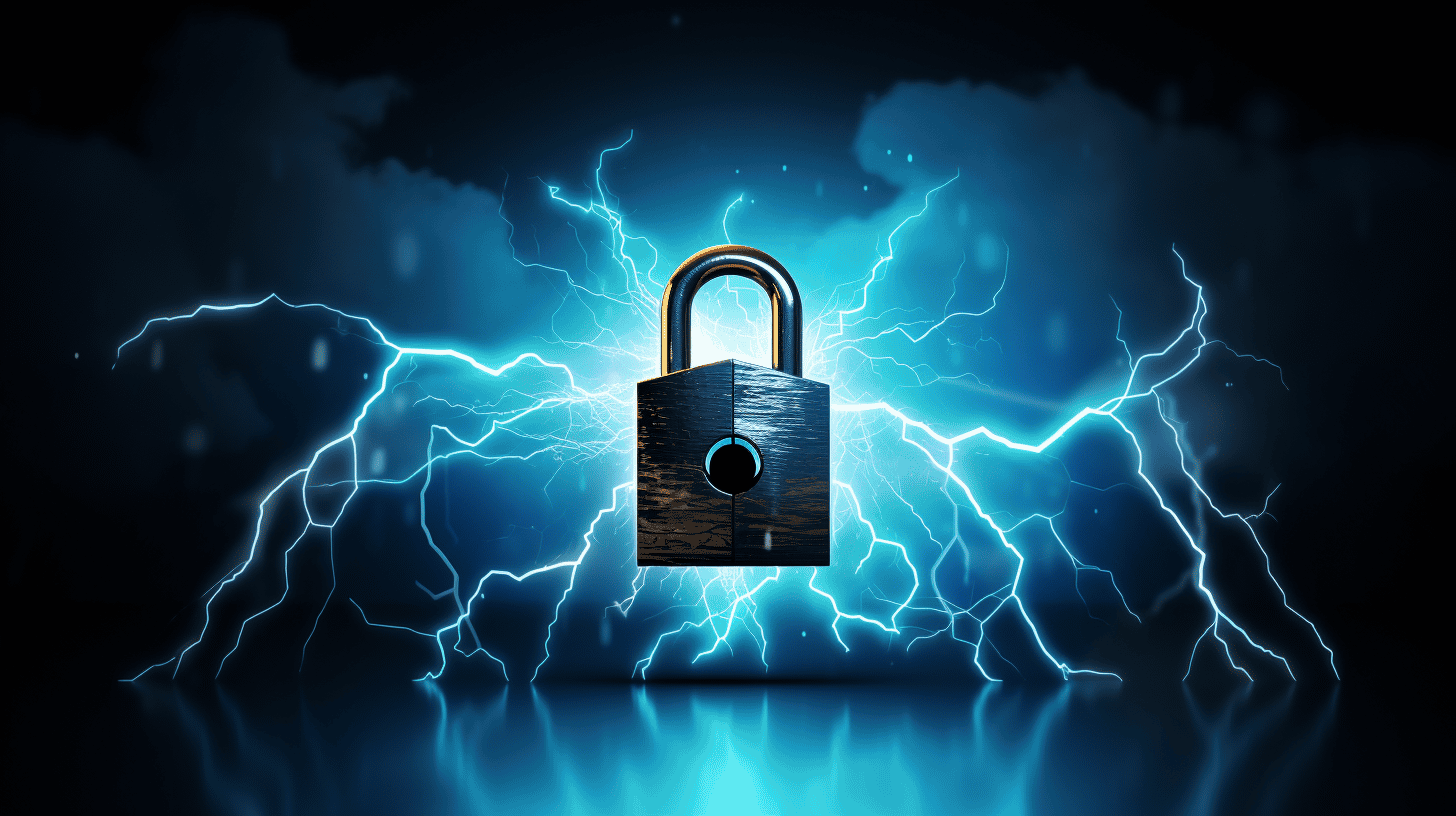In today’s digital landscape, websites play a vital role in business success. When it comes to building and managing websites, WordPress has emerged as a popular choice for individuals and businesses alike. However, as the platform gains more traction, ensuring the security and performance of WordPress websites becomes increasingly crucial.
Every website owner wants their WordPress site to be secure from potential threats while also delivering a smooth and speedy user experience. But achieving the right balance between security and performance can be a challenge. Striking the perfect equilibrium requires a strategic approach and a deep understanding of both aspects.
This article aims to delve into the world of WordPress security and performance, exploring the importance of each and providing practical advice on how to maintain both without compromising one for the other. Whether you’re a business owner, a developer, or simply someone interested in learning more about WordPress, this article will equip you with the knowledge to create a safe and speedy website.
Before we dive into the nitty-gritty of WordPress security and performance, let’s take a moment to understand why they are both paramount for any WordPress site.
Understanding WordPress Security
🔒 In the world of website management, security should always be a top priority. Your WordPress website is no exception. With its popularity and widespread use, WordPress has become a prime target for hackers. But fear not! There are measures you can take to secure your WordPress site and keep it safe from cyber threats.
Importance of WordPress Security
Maintaining a secure WordPress site is crucial for several reasons:
- Protection of sensitive data: If your website collects user information, such as email addresses, passwords, or payment details, ensuring its security is essential to protect your users’ sensitive data from unauthorized access.
- Preserving your reputation: A compromised website can damage your reputation and erode trust among your visitors. By implementing robust security measures, you can maintain the integrity of your WordPress site and show your visitors that you take their online safety seriously.
- Avoiding financial losses: A hacked website can lead to financial losses due to theft, loss of business, or legal consequences. Investing in security measures is an investment in protecting your business and avoiding potential financial setbacks.
Common WordPress Security Threats
🎯 WordPress faces several security threats that website owners should be aware of:
- Brute force attacks: Hackers use automated tools to repeatedly guess login credentials until they find the correct combination. Strong and unique passwords for all user accounts, including administrators, can help mitigate this threat.
- Malware and viruses: Malicious software can infect your WordPress site through vulnerable plugins, themes, or direct file uploads. Regularly updating your WordPress installation, themes, and plugins, as well as using a reliable security plugin, can help prevent malware infections.
- SQL injections: Attackers exploit vulnerabilities in poorly coded plugins or themes to gain unauthorized access to your site’s database. Keeping your WordPress version up to date and using trusted plugins and themes from reputable sources can minimize the risk of SQL injections.
Best Practices for WordPress Security
🔒 Protecting your WordPress site requires adopting a proactive approach and implementing best practices:
- Keep everything up to date: Regularly update your WordPress core, themes, and plugins to ensure that you have the latest security patches and bug fixes. Outdated software can make your site vulnerable to attacks.
- Use strong passwords: Enforce strong passwords for all user accounts on your WordPress site. A combination of uppercase and lowercase letters, numbers, and special characters can make it significantly harder for hackers to guess passwords.
- Limit login attempts: Implementing a login lockdown feature or a two-factor authentication (2FA) plugin can help prevent brute force attacks by limiting the number of login attempts or requiring additional verification.
- Backup your site: Regularly back up your WordPress site’s files and database. In the event of a security breach or data loss, having a recent backup can help you quickly restore your site and minimize downtime.
- Use reputable themes and plugins: Only install themes and plugins from reputable sources, such as the official WordPress repository or reputable third-party marketplaces. Avoid using pirated or outdated themes/plugins, as they may contain vulnerabilities or malicious code.
Remember, securing your WordPress site is an ongoing process. Continuously monitor for security threats, stay informed about the latest security practices, and adapt your security measures accordingly.
🔗 To learn more about automating WordPress security for your business and ensuring its cyber resilience, check out WordPress Automation for Business.
Exploring WordPress Performance
In today’s fast-paced and highly competitive online world, having a high-performing website is crucial for success. Slow loading times, unresponsive pages, and other performance issues can drive visitors away and hurt your business. When it comes to WordPress websites, optimizing performance becomes even more important, as WordPress is a feature-rich platform with a lot of moving parts. In this article, we’ll delve into the importance of WordPress performance, the factors that influence it, and some best practices for improving it.
Importance of WordPress Performance
A website’s performance plays a significant role in user experience and can directly impact your bottom line. Here are some reasons why WordPress performance should be a priority for every website owner:
- User Experience: Users expect websites to load quickly and provide a seamless browsing experience. If your site takes too long to load, users are likely to abandon it and move on to a competitor’s site.
- Search Engine Optimization (SEO): Search engines like Google consider page load time as a ranking factor. A slow loading site can negatively impact your search engine rankings, leading to decreased visibility and organic traffic.
- Conversion Rates: Slow websites can hurt conversions because users are less likely to stay on a site that doesn’t load quickly. Faster websites have been shown to have higher conversion rates and better user engagement.
- Mobile Optimization: With the majority of internet users accessing websites through mobile devices, having a fast and responsive website is crucial. Slow-loading sites can frustrate mobile users and drive them away.
Factors Influencing WordPress Performance
Several factors can influence the performance of a WordPress website. Understanding these factors is key to identifying and resolving performance bottlenecks. Here are some common factors to consider:
- Hosting Provider: The quality of your hosting provider can have a significant impact on your WordPress site’s performance. A reliable and optimized hosting environment can ensure faster loading times and better overall site performance.
- Theme and Plugins: The theme and plugins you use on your WordPress site can impact performance. Bloated themes and poorly coded plugins can slow down your site. Opt for lightweight, optimized themes, and plugins that are regularly updated and maintained.
- Media Optimization: Large image and media files can slow down your site. Compressing images and optimizing media files can help reduce page size and improve load times.
- Caching: Implementing a caching mechanism can significantly improve WordPress performance. Caching plugins store static versions of your web pages, reducing the need for dynamic content generation for every user request.
- Database Optimization: Optimizing your WordPress database can enhance performance. Regularly clean up and optimize your database tables to improve site speed.
Best Practices for Improving WordPress Performance
To optimize your WordPress site’s performance, follow these best practices:
- Choose a Quality Hosting Provider: Invest in a reliable and optimized hosting provider that offers fast server response times and robust infrastructure.
- Use a Lightweight Theme: Opt for a lightweight, SEO-friendly theme that is designed for performance. Avoid themes with excessive features and unnecessary code.
- Limit Plugin Usage: Only install necessary plugins and regularly evaluate their performance impact. Remove any unused or outdated plugins to minimize bloat.
- Optimize Images and Media: Compress and resize images before uploading them to your WordPress site. Use image optimization plugins to automate this process.
- Implement Caching: Use a caching plugin to leverage browser caching and server-side caching for faster page loads.
- Database Maintenance: Regularly clean up and optimize your WordPress database to remove unnecessary data and improve query performance.
Taking these steps to optimize your WordPress website’s performance can lead to improved user experiences, better search engine rankings, and increased conversions. By implementing these best practices, you’ll be well on your way to a highly performing WordPress site.
For more detailed techniques on WordPress site optimization, refer to this WordPress Site Optimization Techniques guide.
Balancing Security and Performance
In today’s digital landscape, there is a delicate balance between security and performance. On one hand, organizations need to take steps to protect their data and systems from cyber threats. On the other hand, they also strive to provide a seamless and efficient user experience. Finding the right balance is crucial to ensuring both security and performance are prioritized.
The Tension between Security and Performance
✨ It’s no secret that security measures can sometimes impact performance. Implementing robust security protocols often means adding layers of encryption, authentication, and authorization processes, which can slow down system response times. This trade-off between security and speed creates a tension that organizations must navigate.
🔒 Let’s take a look at an example: A website with multiple security measures, such as firewalls, SSL certificates, and content filtering, may take longer to load compared to a less secure website. This may frustrate users who expect fast access to content. Conversely, focusing solely on performance and neglecting security measures can leave the system vulnerable to attacks and compromise user data.
How to Maintain Security without Sacrificing Performance
🚀 Fortunately, there are strategies and best practices that organizations can implement to strike a balance between security and performance. Here are some effective ways to achieve this:
- Optimize security processes: Review and evaluate existing security protocols to identify any bottlenecks or inefficiencies. Streamline and optimize security processes to reduce any unnecessary impact on performance.
- Leverage caching: Utilize caching techniques to store frequently accessed data and reduce the need for constant requests to the server. This can significantly improve performance while maintaining security by ensuring the data being served is up-to-date.
- Implement scalable infrastructure: Choose scalable infrastructure solutions that can handle increased traffic and security demands without compromising performance. Cloud-based solutions, for example, provide the flexibility and scalability needed to strike the right balance.
- Prioritize risk assessment: Perform regular risk assessments to identify the most critical areas where security measures need to be strengthened. By prioritizing key risk areas, organizations can focus their resources effectively and minimize the impact on performance.
📝 Remember, finding the perfect balance between security and performance is an ongoing process. It requires continuous monitoring, evaluation, and adaptation to evolving threats and technological advancements. Striking the right balance is not a one-time solution but a commitment to maintaining a secure and high-performing digital environment.
Tips for Effective Balance
Here are some additional tips to help organizations effectively balance security and performance:
- Stay informed: Keep up to date with the latest security trends, vulnerabilities, and performance optimization techniques in the industry. This knowledge will empower you to make informed decisions and implement the most effective strategies.
- Engage in regular testing: Conduct routine security and performance testing to proactively identify any potential weaknesses or bottlenecks. This allows for early detection and resolution of issues before they impact the user experience.
- Educate users: Educate users on good security practices without overwhelming them. Empower them to make educated choices while providing a seamless and secure experience.
By following these tips and implementing the right strategies, organizations can achieve a harmonious balance between security and performance. Remember, it’s not about sacrificing one for the other. It’s about finding the optimal equilibrium that allows for both a strong security posture and a superior user experience.
WordPress Security and Performance Tools
🔒💨 Enhancing the security and performance of your WordPress website is crucial for a smooth and safe user experience. Luckily, there are plenty of tools and plugins available that can help you achieve just that. In this section, we will explore two categories of essential tools for WordPress security and performance: useful plugins for WordPress security and effective add-ons for WordPress performance enhancement.
Useful Plugins for WordPress Security
When it comes to securing your WordPress website, there are several plugins that can enhance your site’s defense against potential threats and vulnerabilities. These plugins offer a range of features such as firewall protection, malware scanning, login security, and more. Here are a few notable ones:
- Wordfence Security: With over 4 million active installations, Wordfence Security is one of the most popular security plugins for WordPress. It provides real-time threat defense and includes features like firewall protection, malware scanning, and login security.
- Sucuri Security: Sucuri Security is known for its powerful website security features. It offers malware scanning, security activity auditing, and post-hack security actions. The plugin also comes with a website firewall option to provide an additional layer of protection.
- iThemes Security: Formerly known as Better WP Security, iThemes Security is a comprehensive security plugin that helps protect your WordPress site from various vulnerabilities. It provides features like brute force protection, file change detection, database backups, and more.
Effective Add-ons for WordPress Performance Enhancement
Improving the performance of your WordPress website is essential for delivering a fast and seamless user experience. There are several add-ons available that can optimize your site’s speed and make it more efficient. Here are a few noteworthy options:
- WP Rocket: WP Rocket is a popular caching plugin that helps improve your site’s speed by creating static versions of your web pages. It also offers minification of CSS and JavaScript files, lazy loading of images, and database optimization.
- Autoptimize: Autoptimize is a lightweight plugin that optimizes your site’s JavaScript, CSS, and HTML code. It combines, minifies, and compresses these files to reduce their size and improve your site’s loading speed.
- Smush: Smush is an image optimization plugin that automatically compresses and resizes your images. This helps reduce their file size without compromising on quality, resulting in faster loading times for your website.
By utilizing these useful plugins for WordPress security and effective add-ons for performance enhancement, you can ensure that your WordPress website is both secure and optimized for top-notch performance. Remember to regularly update these plugins and add-ons to take advantage of the latest security measures and performance improvements.
Learn more about powerful plugins for small business owners.
Conclusion
In conclusion, striking the right balance between security and performance is crucial for any WordPress website. Finding the sweet spot where your site is safe from threats while still delivering a fast and seamless user experience is key to success in the digital realm. To achieve this harmony, remember to:
- Stay vigilant and prioritize WordPress security measures to protect your website from potential vulnerabilities.
- Implement best practices for improving WordPress performance, such as optimizing your site’s speed and minimizing unnecessary plugins and scripts.
- Leverage the power of WordPress security and performance tools to streamline your efforts and enhance your website’s overall functionality.
By taking a proactive approach to both security and performance, you can ensure that your WordPress site remains safe and speedy, providing an exceptional user experience while safeguarding your valuable data.
⚡ Powered by Managed-WP: Simplify your WordPress hosting, unleash your digital freedom, and receive expert support 24/7/365.
Frequently Asked Questions
- How can I balance security and performance on my WordPress website?
To balance security and performance on your WordPress website, you can optimize your website’s code and database, use a reliable hosting provider, implement a caching plugin, regularly update themes and plugins, use a reputable security plugin, enable SSL encryption, and regularly backup your website.
- What are some recommended security plugins for WordPress?
Some recommended security plugins for WordPress are: 1. Wordfence Security, 2. Sucuri Security, 3. iThemes Security, 4. All In One WP Security & Firewall, and 5. BulletProof Security.
- How does a caching plugin help improve website performance?
A caching plugin generates static HTML pages of your website, which are then served to visitors instead of dynamically generating each page. This significantly reduces server load and improves website speed and performance.
- Why is it important to keep themes and plugins updated for security and performance?
Keeping themes and plugins updated is important for both security and performance reasons. Updates often include bug fixes, security patches, and performance enhancements. Outdated themes and plugins can have vulnerabilities that hackers can exploit, and they may also cause compatibility issues and slow down your website.
- Is it necessary to have an SSL certificate for a secure and fast WordPress website?
Yes, having an SSL certificate is necessary for a secure and fast WordPress website. SSL encryption encrypts communication between the user’s browser and your website, protecting sensitive information and enhancing user trust. Additionally, search engines prioritize secure websites in search results, which can positively impact your website’s visibility and SEO.



















